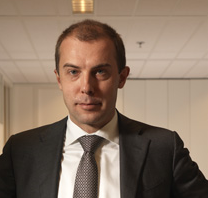Defining the territorial scope of genuine use
Pieter Veeze, Defining the territorial scope of genuine use, Alicante, November 10, 2011
 Een transcript van de lezing die Pieter Veeze, BBIE heeft gehouden 10 november j.l. te Alicante inzake ´genuine´ use. Het lijkt een bewerking van wat we eerder zagen in IEF 9892 en wel één die merkenrechtjuristen en -gemachtigden een overzichtelijk toetsingscriterium geeft aan de hand van de ONEL-case, zo blijkt ook uit de inhoudsopgave.
Een transcript van de lezing die Pieter Veeze, BBIE heeft gehouden 10 november j.l. te Alicante inzake ´genuine´ use. Het lijkt een bewerking van wat we eerder zagen in IEF 9892 en wel één die merkenrechtjuristen en -gemachtigden een overzichtelijk toetsingscriterium geeft aan de hand van de ONEL-case, zo blijkt ook uit de inhoudsopgave.
Introductie: I will deal today with a subject, which I think is one (of the view) “unexploited areas” of European trademark law: the territorial scope of genuine use. It is an honour and a pleasure to have been invited to speak on this subject, which is, to my belief, one of the key questions for the future of trademark law in Europe and which has, honestly speaking, become more and more sort of a “personal hobby” for me. I would like to thank the organization for giving me this opportunity.
Inhoudsopgave:
Use in trademark law – some general remarks
ONEL: the fact
ONEL: the arguments
ONEL: the case before the ECJ
Genuine use: predicting the future1. Is use of a CTM in one country always enough
2. If not, is use of a CTM in one country never enough?
3. If it is never enough, what is needed?
4. Should the assessment of genuine use in the Community be done in the abstract, without reference to the borders of the territory of the individual Member States
(zie complete tekst in de pdf)
As a final thing, I would like to share something with you. Honestly speaking, I was a bit overwhelmed by the amount of attention the ONEL case attracted. The discussion about genuine use of a CTM is, of course, not entirely new 21 , but the ONEL decision really seemed to “boost it up”. Shortly after our decision, OHIM and several national offices issued press statements. Almost every users organization I had ever heard of has expressed an opinion, and the case has even been discussed in European Parliament. Further, the issue plays an important role in the famous Study on the Overall Functioning of the European Trade Mark System by the Max Planck Institute (MPI) 22 . I assume that tomorrow, Mr. Knaak will discuss this Study in detail with you, so I will not comment on that, besides from saying that I find it an extremely interesting and valuable document.
There is, however, one thing I find difficult to understand in the MPI Study, and that is the “second reading” of the Joint Statement, namely that it would not imply that use in one country by definition is enough 23 . In my view the wordings are clear:
The Council and the Commission consider that use which is genuine within the meaning of Article 15 in one country constitutes genuine use in the Community.
The Joint Statement does not say that use in one country can constitute genuine use, it says that it constitutes genuine use in the Community, which for me implies, in plain English, an automatism.
Interestingly enough, I hear this “second reading” more and more, especially from sources that previously seemed much more radical in expressing their views on the (minimal) amount of use required to maintain a CTM. Suspicious minds might interpret this as an indication that everybody wants to be in the “winning team”. Or is afraid to be in the “loosing team”, and be criticized or even held liable in the future. I tend to look at this development in a positive way: even though the ECJ has not yet decided on the ONEL case, I believe that practically no one any more seems to answer question 1 in the (absolute) affirmative. So the discussions about it, in many different gremia, already seem to have led to a certain extent of convergence.





















































































